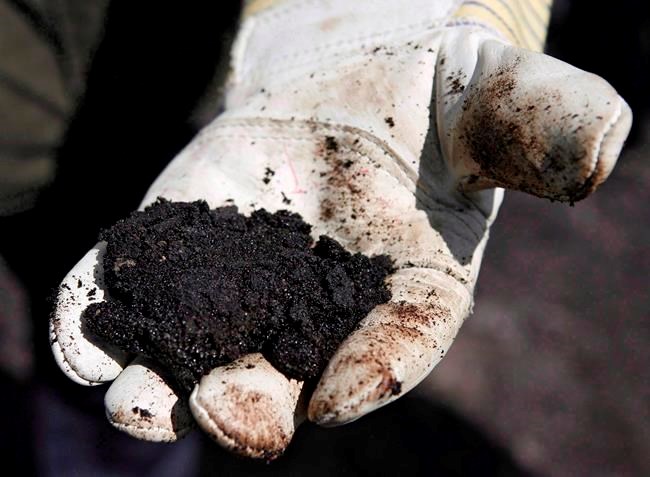CALGARY — Oilsands producers are likely losing money or barely breaking even as prices for Western Canadian Select bitumen-blend crude dipped as low as US$3.82 per barrel on Monday, analysts said.
Realized prices for bitumen likely crossed into negative territory as they tested new record low levels late last week after deducting the cost of the lighter oil blend required to allow the sticky bitumen to flow in a pipeline, said Michael Dunn with Stifel FirstEnergy in Calgary.
"Given the current futures market for differentials and FX (exchange rates), we estimate the majority of non-upgraded bitumen production in Alberta (1.5 million barrels per day in 2019) requires high-US$20s per barrel WTI to cover variable costs, and an additional approximately US$2 to US$5 higher if we include sustaining capital requirements," said Dunn in a report.
"With WTI prices below this threshold, we expect industry to be curtailing output significantly in the coming weeks."
U.S. benchmark West Texas Intermediate oil traded as low as US$19.85 per barrel on Monday morning.
Meanwhile, analyst Matt Murphy with Tudor Pickering Holt & Co. said his numbers show bitumen realizations were still slightly positive on Monday — albeit barely, at a little less than a dollar per barrel — because the price of condensate that many producers use as diluent has also tumbled.
Neither set of calculations include the cost of transporting the crude — Murphy said just the cost of sending the oil by pipeline from its source in northern Alberta to the Hardisty marketing hub in central Alberta would put almost every barrel in the red.
As much as 20 per cent or 340,000 barrels per day of thermal oilsands production could be shut down, Murphy said.
Dunn estimated the curtailments will total a "few hundred thousand barrels per day," but the technical hazards of shutting down and restarting steamed oilsands wells means operators will have to continue to produce bitumen at a slower rate.
The reduction of demand for oil in North America means Western Canadian crude storage is rapidly filling, he said.
The situation is made worse by deferrals of planned spring maintenance shutdowns at some oilsands mine upgraders to avoid adding maintenance staff to the workforce due to COVID-19 transmission worries, he added.
This report by The Canadian Press was first published March 30, 2020.
Dan Healing, The Canadian Press



